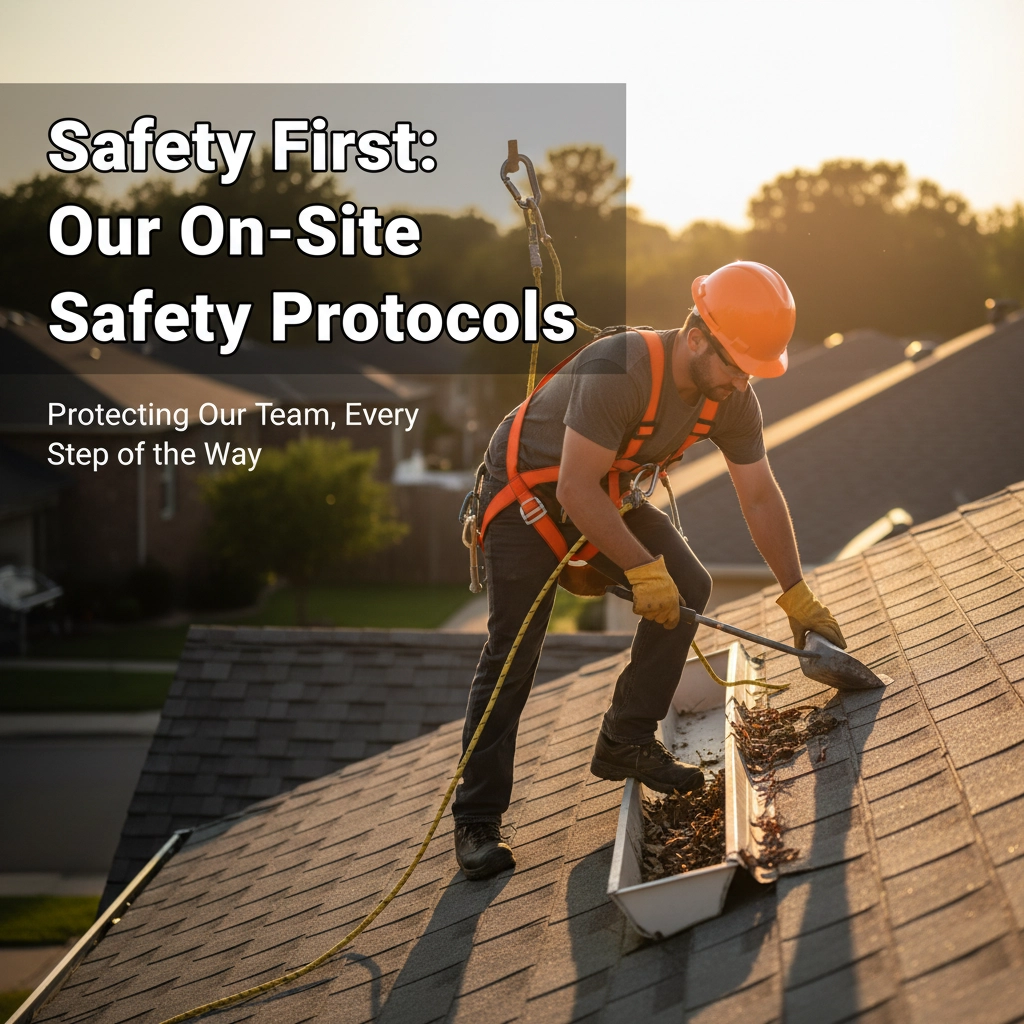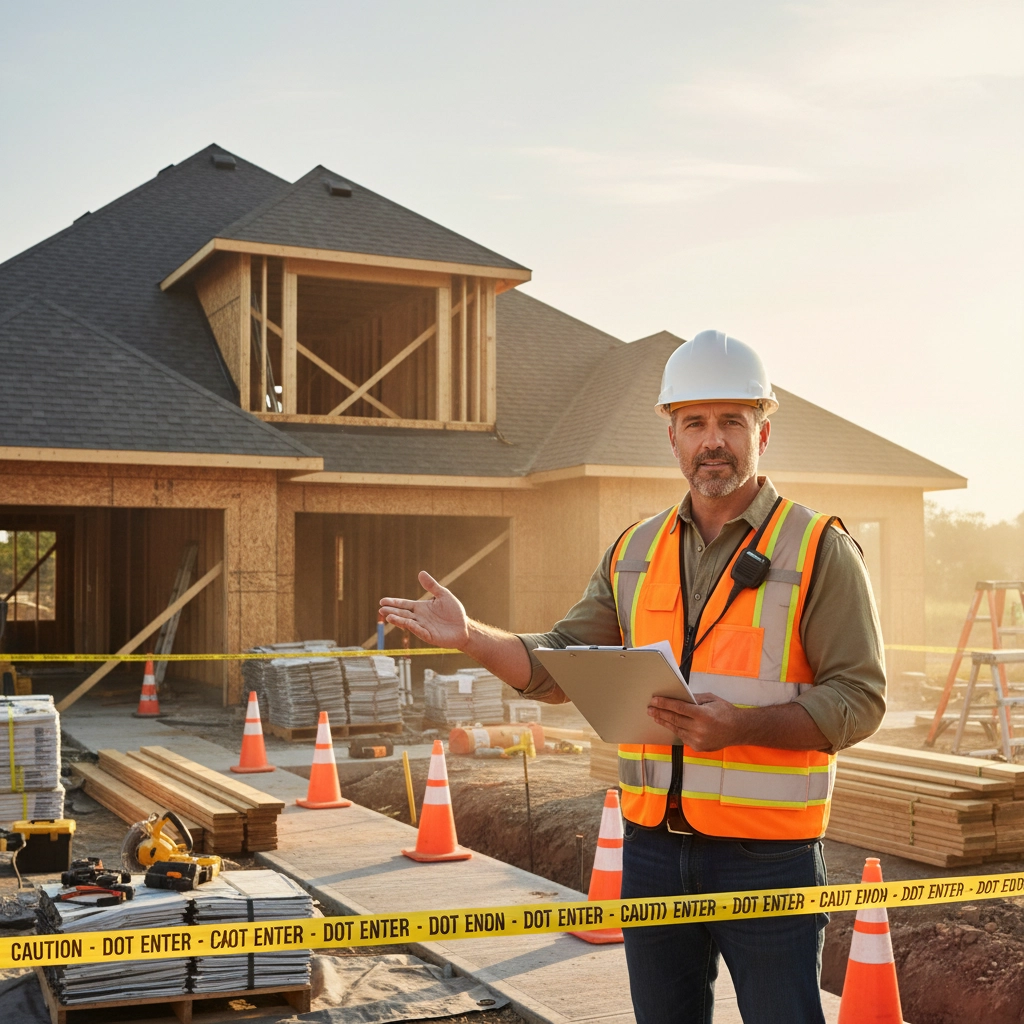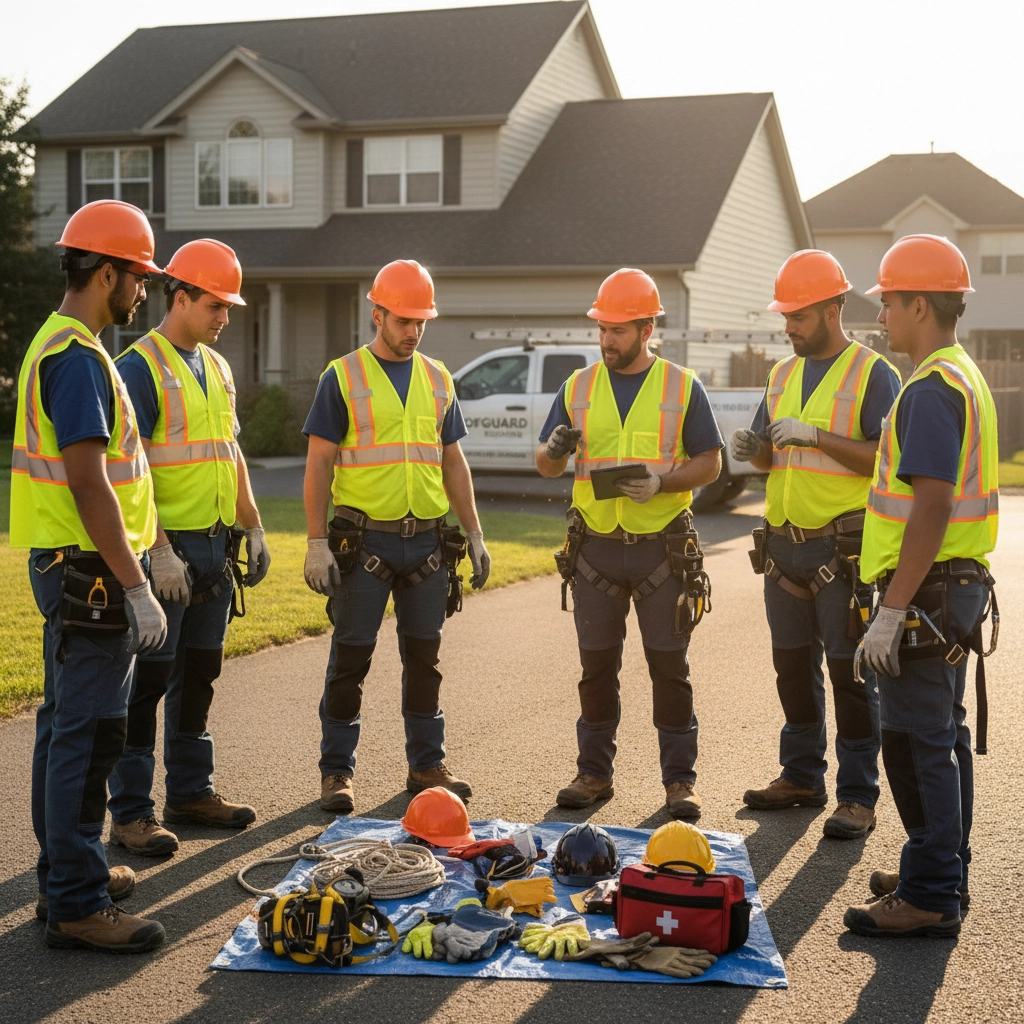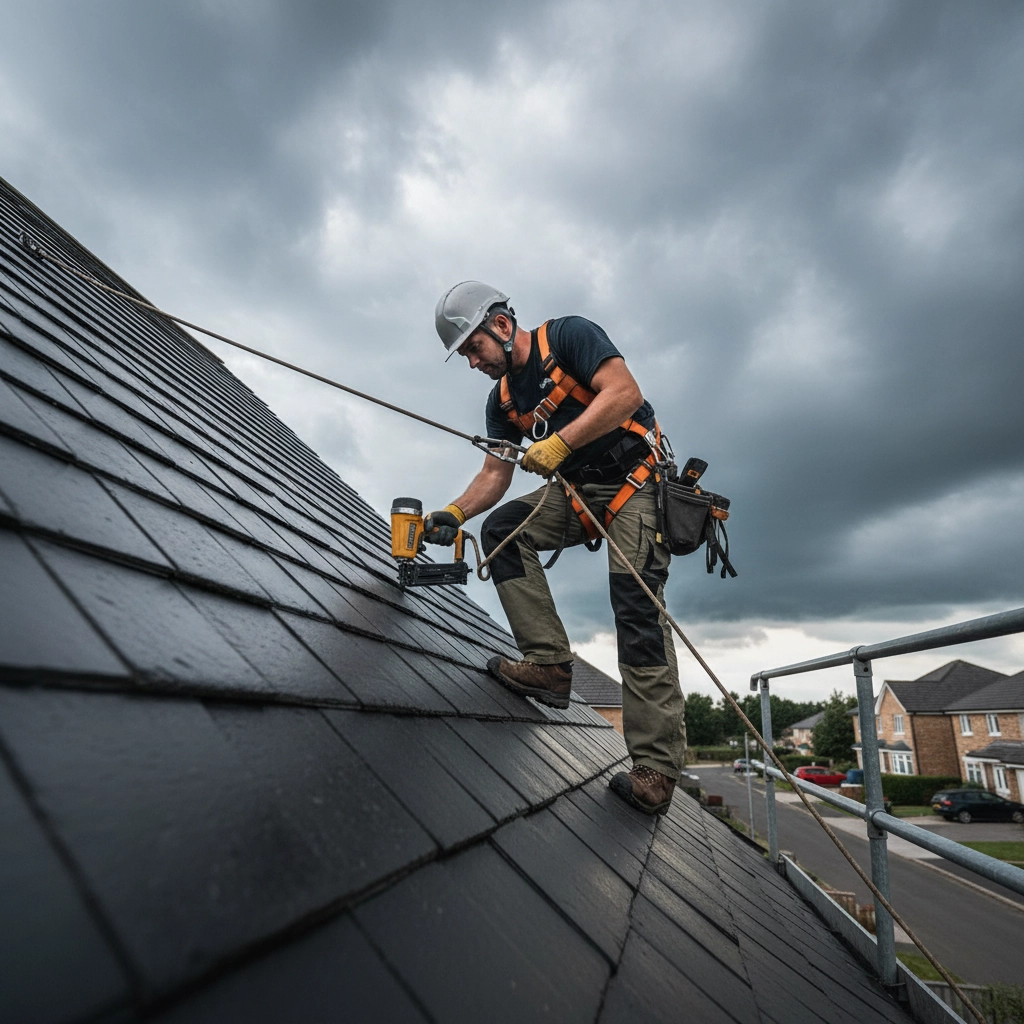
When you're working 20+ feet off the ground on a sloped surface, there's no room for shortcuts or "good enough" when it comes to safety. At Best Roofing Now, we've built our reputation not just on quality roofing work, but on getting every single crew member home safely at the end of each day. Here's exactly how we make that happen through our comprehensive on-site safety protocols.
Before We Even Touch Your Roof: Pre-Job Safety Planning
Every roofing project starts in our office, not on your roof. Our safety protocols kick in the moment we schedule your job. We begin with a detailed site assessment that goes far beyond just looking at your roof. Our team evaluates everything from the terrain around your home to potential hazards like power lines, landscaping obstacles, and neighbor proximity.
"Safety isn't just about following rules – it's about creating a culture where everyone looks out for each other," says James Turner, our owner. "We've seen too many preventable accidents in this industry, and we refuse to be another statistic."
During our pre-job planning phase, we identify specific safety challenges your property might present. Is there a steep slope leading to your backyard? Are there delicate plants or outdoor furniture that need protection? Do overhead power lines create additional hazards? All of these factors influence our safety setup and crew assignments.

Site Setup: Creating a Safety Zone
Once our crew arrives, the first hour is dedicated entirely to site preparation and safety setup – we don't touch a single shingle until every safety measure is in place. This process includes establishing a clear perimeter around your home where only authorized personnel can enter, setting up equipment in designated zones away from foot traffic, and installing warning signs and barriers to protect both our workers and your family.
Our material delivery system follows strict protocols too. All materials are positioned to minimize lifting hazards and prevent accidental contact with electrical sources. We use mechanical lifting equipment whenever possible to reduce the physical strain on our crew members and eliminate unnecessary risks.
Weather monitoring begins before we arrive and continues throughout the workday. Charlotte's weather can change quickly, and we have specific wind speed, precipitation, and temperature thresholds that determine whether work can continue safely. When conditions become questionable, we stop work immediately – no exceptions.
Team Training: Every Crew Member is Safety-Certified
You won't find a single person on our roofs who hasn't completed our comprehensive safety training program. This isn't a one-time deal either – every team member undergoes annual recertification and monthly safety refresher sessions.
Our training covers fall protection systems, ladder safety, equipment operation, hazard recognition, and emergency response procedures. But we go beyond basic requirements. Each crew member is trained to spot and communicate potential hazards, ensuring multiple sets of eyes are always watching for safety issues.

New hires complete a 40-hour safety program before they're allowed on any roof, and they work alongside experienced crew members for their first month. We believe that safety habits need to become second nature, and that only happens through consistent practice and mentorship.
Equipment Safety and Personal Protective Equipment
Walk onto any Best Roofing Now job site and you'll immediately notice our commitment to proper equipment. Every crew member wears OSHA-compliant hard hats, safety glasses, non-slip work boots, and high-visibility vests. During certain phases of work, additional PPE like harnesses, gloves, and hearing protection are required.
Our fall protection systems exceed industry standards. We use commercial-grade harnesses, properly rated anchor points, and redundant safety lines. Every piece of fall protection equipment is inspected before each use and replaced according to manufacturer specifications or immediately if any wear is detected.
Ladder safety receives special attention since most roofing accidents involve ladder-related falls. Our crews only use industrial-grade ladders that are inspected daily. We maintain proper ladder angles, ensure three-point contact at all times, and never exceed weight ratings. When possible, we use mechanical lifts instead of ladders to reduce exposure to fall hazards.

Charlotte Weather: Our Climate-Specific Precautions
Charlotte's climate presents unique challenges that influence our safety protocols year-round. Summer heat and humidity create serious health risks, so we schedule work during cooler morning hours, mandate regular hydration breaks, and monitor crew members for signs of heat exhaustion.
Spring and fall storms can develop rapidly in our area. We use real-time weather monitoring apps and maintain direct communication with local weather services. Work stops immediately when wind speeds exceed 20 mph or when lightning is detected within 10 miles of the job site.
Winter work requires additional precautions. Ice and frost make surfaces extremely dangerous, so we don't begin work until surfaces are completely dry. We also adjust our work schedules to account for shorter daylight hours and ensure adequate visibility for all safety procedures.
Seasonal hazard training keeps our crews prepared for weather-specific challenges. This includes recognizing early signs of severe weather, understanding how temperature changes affect roofing materials and safety equipment, and knowing when conditions require work stoppage regardless of project deadlines.
Daily Safety Checks: Constant Vigilance
Every workday begins with a safety meeting where we review the day's specific hazards, weather conditions, and work plan. Each crew member confirms their equipment is in good condition and reports any safety concerns from the previous day.
Throughout the day, our crew leaders conduct regular safety inspections. These aren't formal clipboard exercises – they're ongoing conversations about current conditions and potential hazards. If weather changes, if a new challenge appears, or if equipment needs adjustment, work stops until the situation is addressed.

End-of-day safety checks ensure all equipment is properly stored, work areas are secured, and potential hazards are eliminated. We never leave a job site with loose materials, unprotected openings, or equipment that could create hazards overnight.
Emergency Response: When Things Go Wrong
Despite all our precautions, we maintain detailed emergency response procedures because we know that accidents can still happen. Every crew member is trained in basic first aid and CPR, and our crew leaders are certified in emergency response procedures.
Our emergency action plans include immediate response protocols for different types of accidents, direct communication channels with local emergency services, and specific procedures for workplace injuries. We maintain emergency supplies on every job site and ensure clear access routes for emergency responders.
Communication during emergencies follows a clear chain of command that ensures rapid response while maintaining scene safety. Every crew member knows exactly who to contact and what steps to take in various emergency scenarios.
Accountability and Continuous Improvement
Our safety protocols aren't just written policies – they're living procedures that evolve based on experience and industry developments. We track safety metrics, analyze near-miss incidents, and regularly review our procedures with safety consultants and insurance professionals.
Monthly safety meetings include all crew members and focus on real-world situations we encounter in Charlotte area roofing work. These sessions allow our team to share experiences, suggest improvements, and ensure everyone stays current with best practices.
We also maintain partnerships with local safety organizations and participate in industry safety initiatives. This commitment helps us stay ahead of emerging safety trends and continuously improve our protocols.
When you choose Best Roofing Now, you're not just getting quality roofing work – you're supporting a company that prioritizes the safety and wellbeing of every person who steps foot on your property. Our comprehensive safety protocols represent years of experience, ongoing training, and an unwavering commitment to bringing every team member home safely each day.
Your roof is important, but nothing is more important than the safety of the people working to protect your home.






